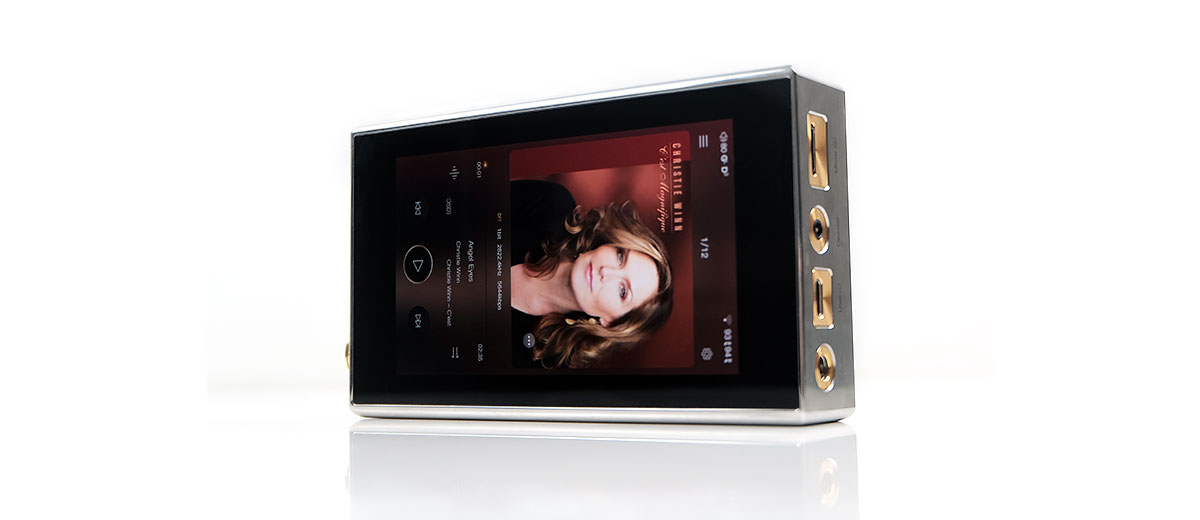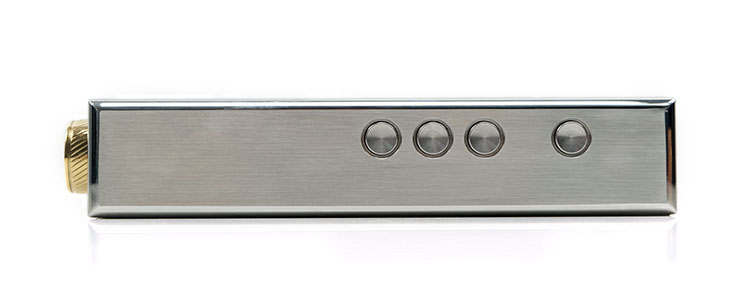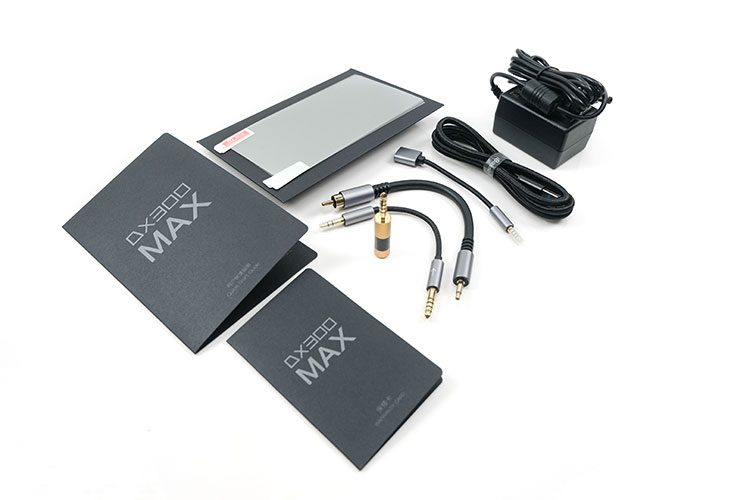Controls
Physical
This is a major change or an upgrade on the previous iteration with the inclusion of playback controls and a power button on the right-side panel of the DX300 MAX.
One of the major complaints about the previous design was the lack of physical control buttons beyond the potentiometer leaving you a mix of touch and wireless only. This has now been remedied with a set of 3 flush and very steady CNC aluminum playback buttons and a separate similarly designed power button a little further away.
More than that, iBasso will allow you to switch the forward or previous functionality of the buttons via the Audio Control Button feature inside the Android settings menu. That also means no labels on the physical button but I personally found it simple and intuitive to use without labels.
Screen
The DX300 MAX touchscreen will cover pretty much every other control outside of initiating analog volume control, power on/off and LCD on/off.
You can also operate the digital volume from the touch OS but not the analog potentiometer since it is completely separate from the digital side. There is also no double-tap to wake functionality in the DX300 MAX.
The digital volume should be seen as a pre-amp setting and leave it around the 80+ volume range to allow for more nuanced control on the analog side. You can track the volume setting for the DAC on the front OS drop-down bar which has an individual volume display. There is no display for the analog output level.
Aside from that, you do have capacitive multi-gesture support including pinch and zoom, and various apps access to enhance keyboard support such as SwiftKey which I much prefer to the stock version.
Wireless
This is where it gets more diverse in terms of control capability and that is down to the DX300 MAX’s BT5.0 functionality combined with its Android OS app scalability.
Whilst you now have physical buttons for playback control you can still opt for a wireless control system with something like the FiiO RM1 or use the HiByLink server/client protocol from the HiBy Music app on your smartphone for individual track control.
The DX300 MAX will also act as a Roon Remote or even to set up a Chord Poly or 2Go wireless module via WiFi, (and BT) so long as you have TIDAL up and running and the MAX and your Roon Core on your PC connected at the same time.
By switching on the ‘Bluetooth DAC Mode’ in the Bluetooth menu, you can also control and stream audio from a smartphone to the DX300 MAX using most music apps. Because BT5.0 allows Bi-Directional support you can also flip the audio experience and stream your audio from the DX300 MAX to a receiver such as your smartphone or another DAP.
Battery Life
The battery life of the DX300 MAX is split into 2 different parts, analog and digital, and completely separate from each other. You will quickly find out that you do have to keep an eye on both as they drain at different rates meaning at some point one will run out and usually not at the same time.
The analog stage will generally last a lot longer than the ‘always on’ digital side. Add on the higher power consumption of the AK449EQ over the older ES9028 PRO and I suspect that is the reason why iBasso upgraded the digital side battery to a larger 6200mAh rating.
Despite its analog design, the OS can tap into the status and you do get a battery icon on the top-right drop-down bar that drips down by percentage which is very useful. You get a similar separate percentage-based battery icon on the left for the digital side.
The DX300 MAX improved on the DX220 MAX battery rating at an excellent 16 hours standard compared to 14 hours life cycle, however, a number of features and how you use Android will drop that rate.
For example, using the 8-channel Ultimate mode will significantly reduce the battery life to 10 hours or slightly less whereas I found high-res loads and sensible digital and analog volume balancing will be an hour or two below the rated 16 hours.
Booting into Mango OS is more controlled with the major variation depending on your file format for decoding and the load you put on the outputs.
Charging
Both sections have different charging times with the digital battery requiring 3 hours and the analog side needing 2 hours total charge time from 0-100%. The DX300 MAX does have quick charging capability with support for PD2.0 and QC3.0 quick charging protocols for the digital side. I believe it is about 1-1.5 hours for around 70%.
Storage
The iBasso DX300 MAX has a combination of onboard and external storage options and laterally access to remote storage via DLNA or Bluetooth-connected devices.
Internally, you get a fairly healthy 128GB of onboard plus support for an external MicroSD card including SDXC and SDHC formats via the rear panel slot. The official rating of how much memory the slot can handle could push beyond 512GB right up to the new 1TB cards and beyond. This is not a hard ceiling in terms of memory capacity.
Personally, I cannot test that, I tend to keep 64GB size cards only. I tend to find the lifespan of MicroSD cards to vary and 64GB is a more acceptable loss than 500GB if they decide to die.
You can also opt to further expand the DX300 MAX’s storage capability via OTG with a tested 64GB flash drive integrating almost immediately into the Android ecosystem including being picked up by the Mango app.
Unfortunately, I could not load the same flash drive within Mango OS so I am presuming it has been disabled which was not the case with the DX220 MAX Mango OS version.
Packaging & Accessories
Retailing packaging is almost a duplicate of the DX220 MAX. That means a fairly large all-black flip-lid box with minimalist branding and an internal foam-lined 2 tray system with the unit on the top and the accessories underneath.
The unit itself has a protective black sticker on the front and a pre-applied screen protector on the rear. There is no screen protector applied to the front but you can find two tempered glass protectors in a black envelope along with a warranty card underneath.
Accessories
There is also almost no change in the DX300 MAX accessory lineup compared with last year’s DX220 MAX save for the carry case design. Inside, you get the following:
- 2 x Screen protective films
- 1 x Blue Leather case
- 1 x USB Type-C Charging/Data Cable
- 1 x 4.4mm balanced to 3.5mm single-ended cable
- 1x 2.5mm balanced to 4.4mm balanced adapter (CA02)
- 1 x Coaxial (SPDIF) Cable
- 1 x Burn-In Cable
- 1 x User Manual
- 1 x Warranty Card
I consider the supplied blue leather case an upgrade over the original tanned leather option that came with the DX220 MAX. The quality of the leather feels higher with a softer more malleable feel yet it offers a better grip, a tighter fit, and a lower profile compared to the original.
The case also has 3 small imprints for easy manipulation of the playback and power controls without exposing them. My only caveat on this is the propensity to accidentally push the buttons when picking up the DX300 MAX so do train your fingers or thumbs to avoid that if possible.
Click on page 3 below for software performance
Click on page 4 below for sound impressions, wired & wireless performance & pairings
Click on page 5 below for select comparisons








